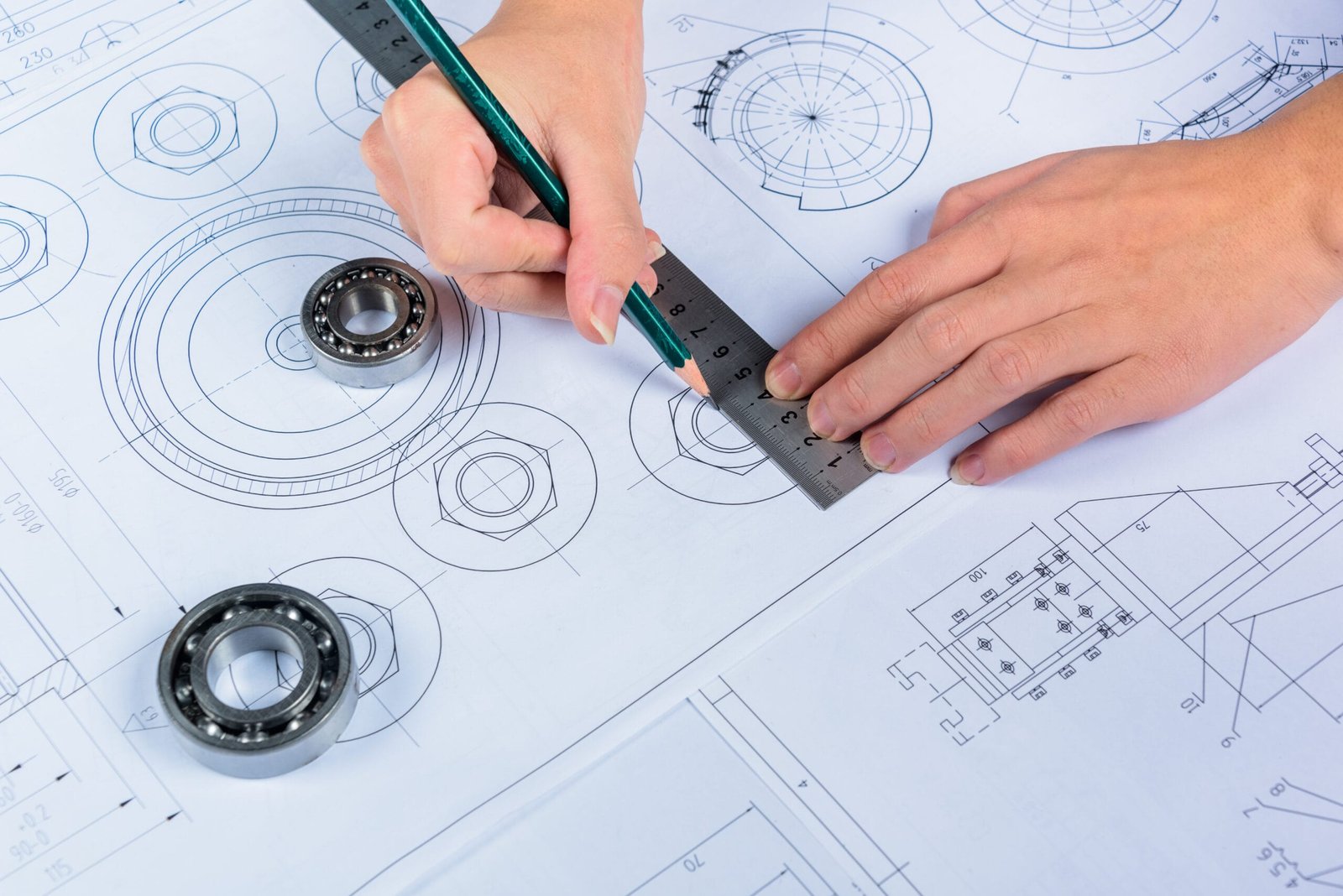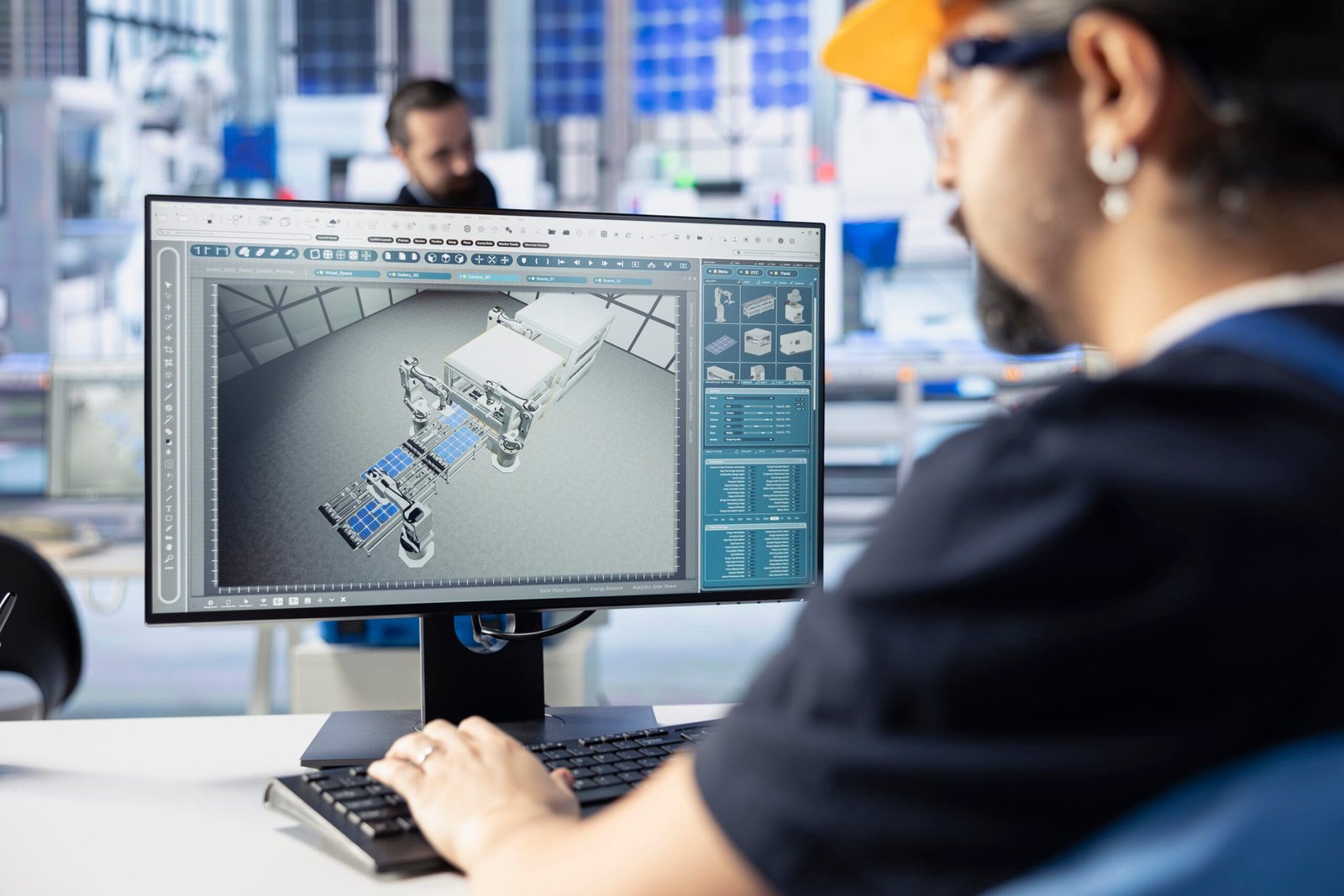Description:
The Importance of 3D Modeling in Product Design has transformed the product design process by offering better visualization, faster development, and improved collaboration. This blog explores how 3D modeling is reshaping industries, boosting creativity, and helping designers bring ideas to life with precision and efficiency.
Introduction
In today’s fast-paced and highly competitive marketplace, the ability to quickly conceptualize, develop, and produce innovative products is more critical than ever. This demand has led to the growing adoption of 3D modeling in product design. Once a tool limited to industrial giants, Importance of 3D Modeling in Product Design is now accessible to startups, freelancers, and product development teams across the globe. From sketching initial ideas to manufacturing detailed prototypes, 3D modeling provides the bridge between imagination and reality.
Product design is no longer confined to paper drawings and two-dimensional blueprints. With powerful 3D modeling tools like Blender, AutoCAD, SolidWorks, Fusion 360, and others, designers can build precise digital representations of their products, simulate their functionality, and refine them before physical production begins. This blog will explore the Importance of 3D Modeling in Product Design, highlighting its impact on creativity, accuracy, speed, and innovation.
What is Importance of 3D Modeling in Product Design?
3D modeling is the process of using specialized software to create a mathematical representation of a three-dimensional object. In product design, this model includes the shape, dimensions, textures, and components of the product. It can be used to:
- Visualize design ideas in 3D.
- Simulate product performance.
- Prepare for 3D printing or manufacturing.
- Communicate clearly with clients and stakeholders.
The result is a realistic digital prototype that can be reviewed, tested, and improved—before a single piece of material is used in production.

Why Importance of 3D Modeling in Product Design
1. Enhanced Visualization
One of the greatest advantages of 3D modeling is the ability to visualize a product before it’s built. Designers can rotate, zoom, and inspect every aspect of the product in virtual space. This gives clients, investors, and team members a better understanding of the final product compared to flat 2D drawings.
For instance, a client may struggle to understand a 2D sketch of a product, but a 3D rendering allows them to see how the object will look, feel, and function in real life. This fosters confidence in the design and supports more informed decision-making.
2. Improved Design Accuracy
3D modeling reduces the risk of human error by offering precise dimensions and geometry. Features like snapping, mirroring, and parametric design ensure that every element fits perfectly with others. For complex assemblies or products with tight tolerances, this precision is essential.
Additionally, software tools allow for simulation and analysis, helping designers test how materials will respond to stress, heat, or motion. This predictive capability saves time and money by preventing errors before they occur in the physical world.
3. Faster Prototyping
3D modeling accelerates the path from concept to prototype. Once a digital model is complete, it can be exported for 3D printing or CNC machining, drastically reducing the development timeline. Designers can produce multiple prototypes in a short period, allowing them to test variations, gather feedback, and iterate quickly.
This speed is vital in industries where time-to-market is a critical factor in success.
4. Cost Efficiency
While creating detailed 3D models requires time and effort, it significantly reduces the overall cost of product development. By catching design flaws early, minimizing rework, and reducing the number of physical prototypes needed, businesses save on material, labor, and production costs.
Furthermore, 3D modeling helps avoid miscommunication with manufacturers. Clear visual and dimensional data reduce the chances of producing defective or mismatched parts.
5. Better Collaboration
In modern product development, collaboration is key. 3D models serve as a common visual language between designers, engineers, marketers, and clients. Team members from different departments and even different time zones can work on the same model, share feedback, and update designs in real time using cloud-based tools.
This streamlined communication improves productivity and reduces the likelihood of misunderstandings during design reviews.
6. Support for Customization
Personalized products are in high demand, especially in industries like consumer electronics, automotive, medical devices, and wearables. 3D modeling allows designers to easily modify existing models to meet individual needs without starting from scratch. For example, a customer may want a phone case with a unique logo or a prosthetic device tailored to their body measurements—3D modeling makes this type of customization possible and scalable.

Real-World Applications of 3D Modeling in Product Design
Let’s explore a few industries where 3D modeling has become a game-changer:
- Consumer Electronics: Designers use 3D modeling to create sleek product shells, simulate assembly processes, and ensure ergonomic designs.
- Medical Devices: Prosthetics, implants, and tools can be modeled to fit individual anatomy and tested digitally before being manufactured.
- Automotive Industry: From engine components to interiors, 3D modeling supports rapid prototyping, crash simulations, and assembly optimization.
- Home Appliances: Product designers can visualize everything from vacuum cleaners to microwaves with moving parts and detailed textures.
- Toys and Games: Designers test shapes, colors, and moving parts of toys in 3D before producing physical versions.
The Role of 3D Modeling in Innovation
Innovation thrives when ideas can be explored without constraints. Importance of 3D Modeling in Product Design enables experimentation in ways that traditional design methods cannot. Designers can test bold new forms, incorporate cutting-edge materials, and simulate how a product interacts with users or the environment.
It also supports sustainability by allowing companies to simulate environmental impact, reduce waste in prototyping, and plan more efficient manufacturing processes.
Companies like DesignHok leverage Importance of 3D Modeling in Product Design to not only develop product designs but also to provide clients with immersive visual experiences—turning sketches into realistic models that communicate form, function, and value.
Conclusion
The integration of Importance of 3D Modeling in Product Design into the product design process is not just a trend—it’s a fundamental shift in how products are imagined, designed, and delivered. From the earliest stages of concept development to the final stages of manufacturing, 3D modeling brings clarity, speed, and innovation to the process.
By enabling better visualization, reducing errors, supporting rapid prototyping, and fostering collaboration, 3D modeling helps designers create products that are not only functional and beautiful but also feasible and market-ready.
For businesses like DesignHok, Importance of 3D Modeling in Product Design is a vital part of their design toolkit—allowing them to deliver smarter, faster, and more impactful solutions to their clients. Whether you’re a startup or an enterprise, adopting Importance of 3D Modeling in Product Design into your product development strategy can provide the competitive edge you need in today’s market.
FAQs: Importance of 3D Modeling in Product Design
Q1: What software is commonly used for 3D product modeling?
Popular tools include Blender, SolidWorks, Fusion 360, AutoCAD, Rhino, and CATIA. The best choice depends on the project type and required features.
Q2: How does 3D modeling help in reducing product development costs?
It minimizes design errors, reduces the need for multiple physical prototypes, and helps avoid costly production mistakes by simulating and testing digitally.
Q3: Can 3D models be used for 3D printing?
Yes. Most 3D models can be exported in STL or OBJ format, which are compatible with 3D printers and rapid prototyping tools.
Q4: Is 3D modeling only for engineers?
No. 3D modeling is used by product designers, artists, marketers, and even clients to visualize and communicate design ideas more clearly.
Q5: How long does it take to model a product in 3D?
It varies depending on the complexity of the design. Simple models can take a few hours, while detailed models may take days or weeks.
Q6: Can 3D modeling support product customization?
Absolutely. 3D modeling allows for easy alterations and personalization, making it ideal for mass customization and user-specific product designs.





